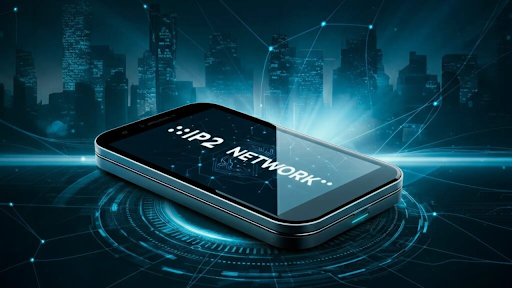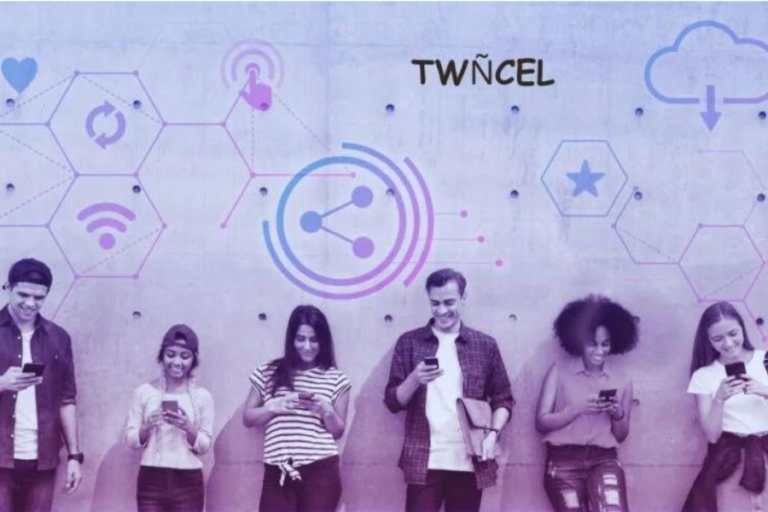IP2 Network Explained: What It Is, How It Works, and Why It Matters
In the vast and complex landscape of the internet, most users are unaware of the invisible infrastructure that supports digital communication and secure content delivery. One such backbone is the IP2 Network. While not as widely known as domain name servers or internet protocols, the IP2 Network plays a crucial role in how data is mapped, accessed, and secured online.
In this article, we’ll explore what the IP2 Network is, how it functions, its real-world applications, the technologies behind it, and its growing relevance in fields such as cybersecurity, geolocation services, and digital forensics
What Is the IP2 Network?
The IP2 Network is a data mapping system that connects IP addresses to various forms of metadata, including geographical location, internet service providers (ISPs), time zones, and domain ownership. It works as an essential resource for web services, applications, and businesses to determine where a user is located or which network they belong to.
This network is often based on databases like IP2Location, IP2Proxy, and IP2WHOIS, which collect, analyze, and distribute this metadata. In this context, “IP2” refers to the transformation of raw IP (Internet Protocol) addresses into actionable intelligence.
Why the IP2 Network Matters
The IP2 Network serves multiple industries and purposes, from improving user experience in content delivery to mitigating online fraud. Companies use IP intelligence for:
- Geotargeted advertising
- Location-based access control
- Website analytics
- Digital rights management
- Cybersecurity threat detection
- Spam and bot filtering
By providing real-time data about the origin and nature of an IP address, the IP2 Network helps businesses and organizations make informed decisions about access, permissions, and trust.
Key Components of the IP2 Network
Understanding the inner workings of the IP2 Network involves breaking down its main components:
1. IP Geolocation Database
This is the core of the IP2 Network. These databases use a combination of registry data, user-contributed data, GPS data (in mobile contexts), and ISP information to determine the physical location of an IP address.
2. IP Proxy Detection
Proxies, VPNs, and anonymizers can hide users’ real IP addresses. The IP2 Network includes detection tools that identify these obfuscation methods to flag potential fraud or policy violations.
3. WHOIS and ASN Data
The network also integrates WHOIS (domain registration data) and Autonomous System Numbers (ASN), which help determine ownership of IP blocks and their network infrastructure.
4. API Integrations
The IP2 Network is not just a passive database. Many services offer real-time APIs that integrate IP geolocation and proxy detection into websites, software, and applications.
How the IP2 Network Works
At a high level, the IP2 Network functions by parsing IP addresses and returning associated data from a vast, frequently updated database. Here’s how:
- User Accesses a Web Resource: When a user visits a website or service, their IP address is logged.
- Query Sent to IP2 System: The website or app sends this IP address to an IP2 API or local database.
- Data Retrieved: The system returns data like country, city, region, time zone, ISP, and whether the user is using a proxy.
- Action Taken: Based on this data, the system can serve region-specific content, deny access, or log suspicious behavior.
Applications of the IP2 Network
The IP2 Network is more than a technical curiosity—it has tangible applications across multiple industries.
1. Cybersecurity and Fraud Detection
Detecting anomalous access patterns, such as multiple failed logins from unusual countries, is easier with IP2-based intelligence. Many fraud detection systems rely on IP2 data to stop credential stuffing, phishing, and identity theft.
2. Digital Marketing and Advertising
Marketers use the IP2 Network to deliver personalized ads based on location. For instance, a user in London might see different promotions than someone in Tokyo—even if they’re on the same website.
3. Content Licensing and Geo-blocking
Streaming services and content platforms often use the IP2 Network to enforce digital rights. Certain content is only licensed for viewing in specific regions, and IP2 data makes that enforcement possible.
4. Legal and Regulatory Compliance
Governments and legal institutions use IP data for compliance with regulations such as the GDPR, DMCA, or tax jurisdiction laws. The IP2 Network enables the detection and tracking of traffic origin, which is often required in court cases or investigations.
5. Gaming and Online Platforms
Multiplayer gaming platforms rely on IP2 intelligence to match players by region (to reduce latency) and detect cheaters or users masking their identities via VPNs.
The Role of AI in Enhancing the IP2 Network
Artificial Intelligence and machine learning are now enhancing the IP2 Network by predicting fraudulent behavior and identifying emerging proxy servers. AI can analyze user patterns across millions of IP addresses and uncover anomalies that static systems might miss.
This makes the IP2 Network not only reactive but also predictive—a vital shift in the era of sophisticated cyber threats.
IP2 Network vs Traditional IP Tracking
Unlike simple IP tracking methods that provide limited data, the IP2 Network delivers nuanced, real-time information through enriched datasets. These include:
- Risk scores for potential fraud
- Proxy status (VPN, Tor exit node, open proxy)
- Organization and domain data
- Historical data for forensics
The traditional tracking tools often fail to account for mobile users, shared IP environments (like cafes), and spoofing. The IP2 Network solves many of these problems through smarter algorithms and broader data sources.
Challenges and Limitations
Despite its powerful capabilities, the IP2 Network has some limitations:
- Accuracy: While country-level data is highly accurate, city-level accuracy can vary, especially with mobile networks.
- Privacy Concerns: Some users and advocacy groups argue that IP intelligence may overstep privacy boundaries.
- VPN and Proxy Arms Race: As VPN providers innovate, so must IP2 proxy detection tools—creating an ongoing cat-and-mouse game.
- False Positives: Mistaking a legitimate user for a threat due to shared IPs or proxies can hurt user experience.
Nonetheless, most organizations see the benefits of the IP2 Network outweighing its challenges.
Future of the IP2 Network
The IP2 Network is expected to evolve rapidly alongside internet architecture. With IPv6 adoption increasing, databases must adapt to store and analyze significantly longer addresses. Additionally, cloud-based microservices, edge computing, and decentralized networks (like blockchain) will influence how IP tracking works.
The IP2 Network will likely become more integrated with biometric security, device fingerprinting, and zero-trust security models to offer deeper protection and personalization.
FAQ
Q1: What is the IP2 Network used for?
A: The IP2 Network is used for mapping IP addresses to geolocation, ISP data, proxy detection, and cybersecurity purposes.
Q2: Is the IP2 Network accurate?
A: Yes, the IP2 Network is highly accurate at the country and region level, though accuracy may vary at the city level depending on the ISP and network.
Q3: Can the IP2 Network detect VPNs?
A: Absolutely. One of its core features is proxy detection, including VPNs, Tor nodes, and residential proxies.
Q4: Is the IP2 Network free to use?
A: Some basic services or trial versions are free, but full access to IP2 databases and APIs typically requires a subscription.
Q5: How does the IP2 Network protect against fraud?
A: By identifying suspicious IP behavior, proxy usage, and geographic anomalies, the IP2 Network helps flag potential fraud and identity theft.
Q6: Does the IP2 Network support IPv6?
A: Yes, modern versions of the IP2 Network support both IPv4 and IPv6 address mapping.
Q7: Can the IP2 Network identify users?
A: No, it does not identify individuals directly. It identifies IP-related data, which can be used to infer details about location and network.
Q8: How often is the IP2 Network updated?
A: Leading providers update the database daily or weekly to maintain accuracy against dynamic IP address assignments.
Q9: Can websites block users with the IP2 Network?
A: Yes, websites often use IP2 data to block known threats, spam sources, or out-of-region users.
Q10: What’s the difference between IP2Location and the IP2 Network?
A: IP2Location is a specific database within the broader IP2 Network ecosystem, focusing on geographic data from IP addresses.
Conclusion
The IP2 Network has become an indispensable part of today’s internet, even if most users never see it in action. From improving user experience to defending against cybercrime, the IP2 Network enables smarter, safer, and more personalized digital interactions.
As technology evolves, so too will the IP2 Network—adapting to new IP protocols, privacy standards, and real-time requirements. For any business operating online, understanding and leveraging the IP2 Network is no longer optional—it’s essential.
Stay in touch to get more news & updates on Hamrosolarllc!






